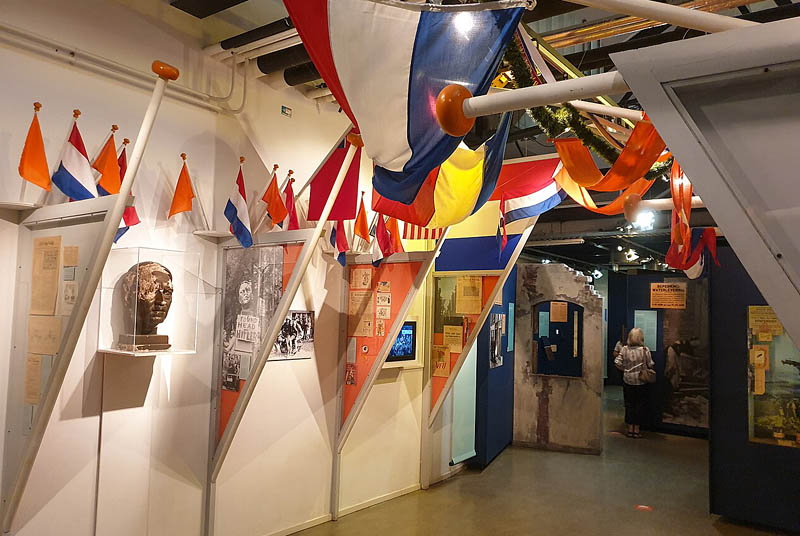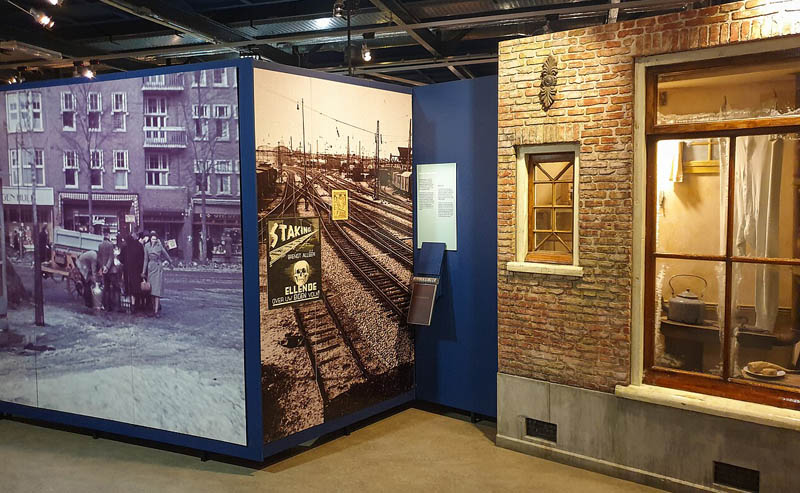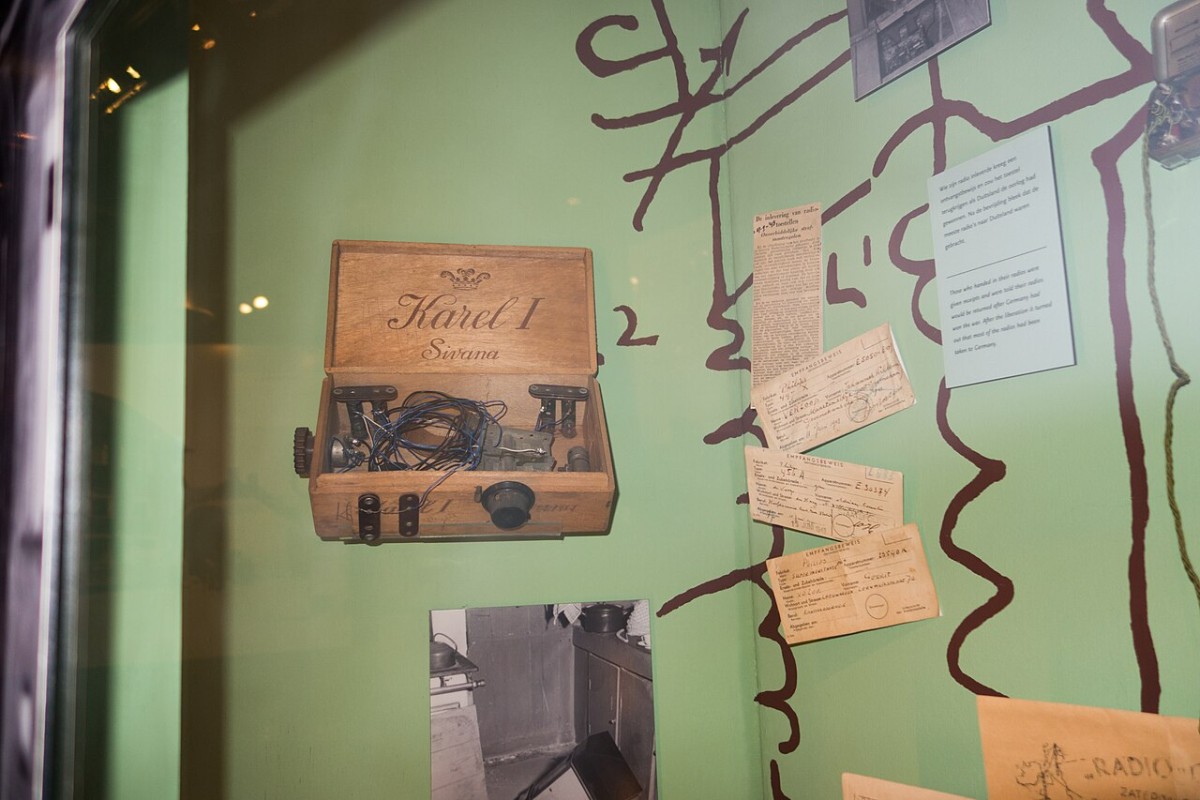Resistance Museum How the Dutch Survived during World War II
The Resistance Museum in Amsterdam is located in the historic Plancius building, opposite the main entrance of Artis Zoo. The permanent exhibition brings to life the war years, in which personal stories provide a compelling image of resistance and occupation. The emphasis is on the dilemmas that people faced during the German occupation and the right, but also wrong, choices they made.

War Years in Images
The exhibition is structured around six periods, each starting with a film with animations and historical images. In addition, many authentic objects, photos and documents from the period 1940-1945 are on display. The museum regularly organizes temporary exhibitions on war-related themes.
The Netherlands began to feel the pressure of the Nazis long before the invasion in 1940, and this is where the story begins. The exhibitions consist of a mix of posters, photos, videos and objects that illustrate aspects of Dutch society before, in and after the Second World War. It tells about the rise of the NSDAP, Hitler’s Nazi party, and how the Netherlands responded to the German invasion and the Nazi regime, and the Dutch actions after the war in the former Dutch East Indies.

Personal Stories of Resistance
The Resistance Museum tells the personal stories of Dutch people who resisted the Nazi occupation. In May 1940, it took less than a week for the Netherlands to change from a free country to an occupied country: participation or resistance that was the choice.
A small group of 25,000 people were involved in the Dutch resistance. Most Dutch people were simply trying to survive the war years. The resistance took many forms: strikes, underground newspapers, forging documents and helping people go into hiding.
Impressive War Exhibitions
The exhibitions show official documents and personal memories, from childhood photos to films, newsreels and home movies. The recording of a mother bathing her baby is moving. The next day they were deported.
Under these circumstances, people became more resourceful by the day. When radio transmitters were no longer allowed because people were listening to broadcasts from England, radios were hidden in biscuit tins, cigar boxes or Vim containers placed next to the sink. (Vim was used to scrub the kitchen sink clean.)
Photos of people with a yellow star on their coats, carrying bags and saying goodbye to friends as if they were going on holiday, leave a lasting impression. The strength of the museum is the mix of general and personal views on the war years.

Stories of Persecution and Hiding
A section of the exhibition follows Dutch Jews from their assimilated life before the war to the moment they fled the Netherlands or went into hiding, often with the help of the resistance. However, most of those in hiding were deported to concentration camps, often with the cooperation of Dutch citizens.
The Dutch rightly regard their history of resistance as a point of pride, but this museum does not sugarcoat anything. It shows both the bad and the good reactions to the German occupation.
The members of the resistance movement were brave and risked their lives. Many Dutch people collaborated, others simply tried to survive.
The museum gives an objective picture of the war in the Netherlands and also in the Dutch East Indies.
Visitor information
The Resistance Museum is located in the Plancius building, which was built for the Jewish choir ‘Oefening baart kunst’. The building then served as a music temple, social club, conference centre and garage.
Address: The Resistance Museum: Plantage Kerklaan 61, Amsterdam.
Opening hours: Monday to Friday from 10:00 to 17:00 and on Saturdays, Sundays and public holidays from 11:00 to 17:00.
Avoid disappointment and book your tickets for the Resistance Museum online.
Tip: Visit multiple museums with the I Amsterdam City Card


